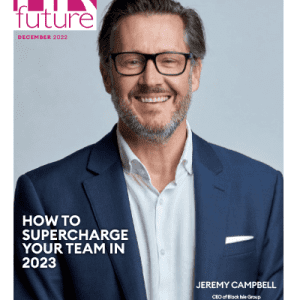Royston Guest explains to Alan Hosking why staff happiness is crucial to business growth.
Why is it important to have happy employees?
One of the greatest assets of your business walks out the door every night. What are you doing to get them to return next day inspired, motivated, and enthused to be the best they can be?
What is the role of the BIG Idea: Your Employee Value Proposition?
A Compelling Value Proposition (CVP) is a key differentiator for your business in achieving competitive advantage. Similarly, your Employee Value Proposition (EVP) is a key differentiator in your People Strategy. Your EVP is critical in helping you achieve Employer of Choice status and, put simply, it’s the balance of the rewards and benefits received by your employees in return for the skills, capabilities, experiences, and performance they bring to your organisation.
Your EVP should be employee-centred and designed based on a deep understanding of what is important to your existing and potential employees.
What three key considerations will help when drafting one’s EVP?
Firstly, understand your people’s WHY. One of the keys to unlocking a motivational environment is to clearly understand your people’s personal goals and how being successful at work can be one of the vehicles and enablers in helping them realise their goals. The moment we create the bridge in their mind – the link between their personal goals, business goals and what they do daily during work – self-motivation kicks in.
This is the defining moment a person changes from someone with a job to someone with a purpose. Whilst the motivation to do so must come from within, the triggers that compel them to make the switch are ones an organisation and its leaders can create. Do you understand your people’s personal WHY?
Secondly, acknowledge your people’s emotional wellbeing on an equal footing to their physical wellbeing. I often encounter stressed managers in the hospitality trade, despairing bankers who don’t see their children and pressured recruitment consultants trying to seal the deal.
Their emotional well being is not a luxury; it’s the energy source powering their performance. When it’s low, their performance is low, which has both a short and long-term impact on the business for which they work. Their well being is measurable beyond business performance too; their lack of happiness has an impact on their health.
A recent study by economists at the University of Warwick, England, found that happiness in the workplace led to a 12% spike in productivity, while unhappy workers proved 10% less productive. Thirdly, set your people up for success. Do your people know what great performance looks like, feels like and acts like in their role from both a behavioral and numerical/KPI perspective?
If you asked your people this question how aligned would their answer be with your version? There should be one version of the truth – in my experience perception and reality are often misaligned. If you haven’t created absolute clarity about what the expectations are for their role, explained and demonstrated what “great” looks like, and set them up for success, it’s almost predictable that you and your people will be working to different models and interpretations of what great looks like.
This is not good for productivity and it certainly isn’t good for their wellbeing and happiness.
Any final thoughts?
Create clarity of purpose for your people. Enable them with the mindset (attitude, determination, will), the skillset (technical or soft skills) and the toolset (tools to do their job) to truly unlock their potential and deliver excellence within their role fueling their inner self worth, igniting their self-motivation, building their confidence and their happiness will be inevitable.
Profile
Royston Guest is a global authority on growing businesses and unlocking people potential. He is CEO of Pti-Worldwide in Warwickshire, United Kingdom, author of the number one best-selling business growth book, Built to Grow and founder of livingyourfuture™. Follow him on Facebook or Instagram. Connect with him on LinkedIn or check out his weekly blog.
This article appeared in the October 2017 issue of HR Future magazine.













